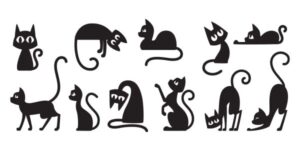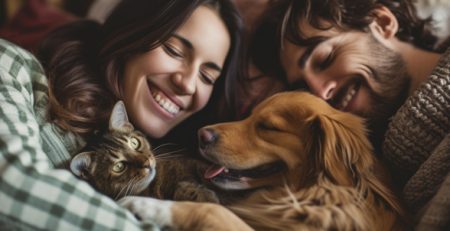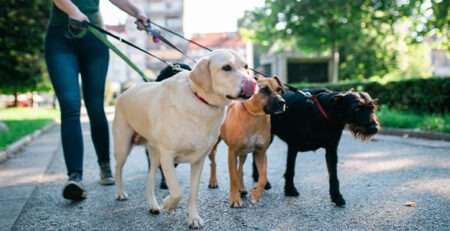The cat’s tail and its mysterious messages and signals
Feline language is very complex, and the main communication patterns used by the cat are:
– Vocal and auditory communication
– Olfactory communication
– Visual and postural communication in which the tail plays a major role.
In addition to enabling the kitty to maintainbalance while walking, running and jumping, acting as a veritable rudder, the tail is the medium through which the cat expresses itself.
Well, the cat speaks precisely through the positions and movements of its tail.
When the cat moves its tail, it is certainly telling us something but what?
What is the cat telling us?
It depends on the position the tail takes and its movements.
Here are all the “friendly” positions:
– Straight up: reveals a friendly attitude. And if the tail vibrates, the cat is expressing great happiness, joy and excitement. A classic example is the meal.
– High with curved end: indicates that the cat is curious about something and is paying attention to it but is still serene.
-Circumventthe cat’s body when it is crouching: when the kitty assumes the sphinx position, it is in a relaxed condition and maybe even prone to take a nap.
– In line with the back swinging from right to left: it stands for great curiosity but can also express a strong desire to play.
– Slowly swaying: the cat concentrating on something. This could be a prelude to a hunting, attacking or simply scouting phase.
Tail position when the cat perceives discomfort
To enter into a perfect relationship with your kitty and avoid misunderstandings especially when he perceives discomfort, it is good to understand what his tail is telling us:
–Moving fast: signifies that the cat is nervous, anxious, stressed or irritated.
– Low and contracted or leaning on the ground: indicates that the cat feels threatened.
– Hidden between the paws and belly: this is a sign of fear and means the cat feels unprotected and exposed to danger.
– Knocking on the ground: communicates nervousness and anger so the cat is angry or annoyed and may react by scratching or attacking other animals or people in front of it. In this case, it is good to distance oneself.
– Swollen tail: the cat feels threatened by a fellow cat or a foreign human that intimidates it. It is possible that along with the raised tail, we will see that the cat hunches a hump and starts walking sideways, growls, lowers its ears and dilates its pupils. In short, he makes himself bigger than he is to intimidate his opponent.

There are also cats without tails
The Isle of Man Cat, or Manx, is either completely tailless or has an extremely short tail.
His condition is due to a congenital skeletal abnormality, Manx syndrome, which occurs as a result of a mutation in the Mm gene.
The spine is found to be shorter than normal in practice and missing the caudal vertebrae.
Other cat breeds with very short tails are the Japanese-American Bobtail, Kurilian Bobtail, and Pixie Bob.
As this is a disorder related to the spine, a cat without a tail may manifest:
- Hopping or abnormal gait
- Urinary incontinence
- Fecal incontinence
- Loss of feeling in the hind legs
Cat tail problems
Injury, trauma, sprain or rupture, or other tail problems are not uncommon, especially for outdoor felines.
If the tail is sore to the touch, dangling, showing skin tears, it is most likely to have sustained trauma and only the Veterinarian will be able to determine the extent and indicate the necessary and appropriate surgical and pharmacological treatment.
The most serious problems occur when the tail injury affects the spine and hind legs, as well as bowel and bladder control.
If you notice an abnormality in your cat’s tail or suspect that it is broken, consult your veterinarian right away.
To refer your cat for a checkup, contact the veterinary doctors on our staff who are always available to you.
We would also like to remind you that Clinica La Veterinaria is always open h24 every day including holidays and with First Aid service from 8 pm to 8 am.











